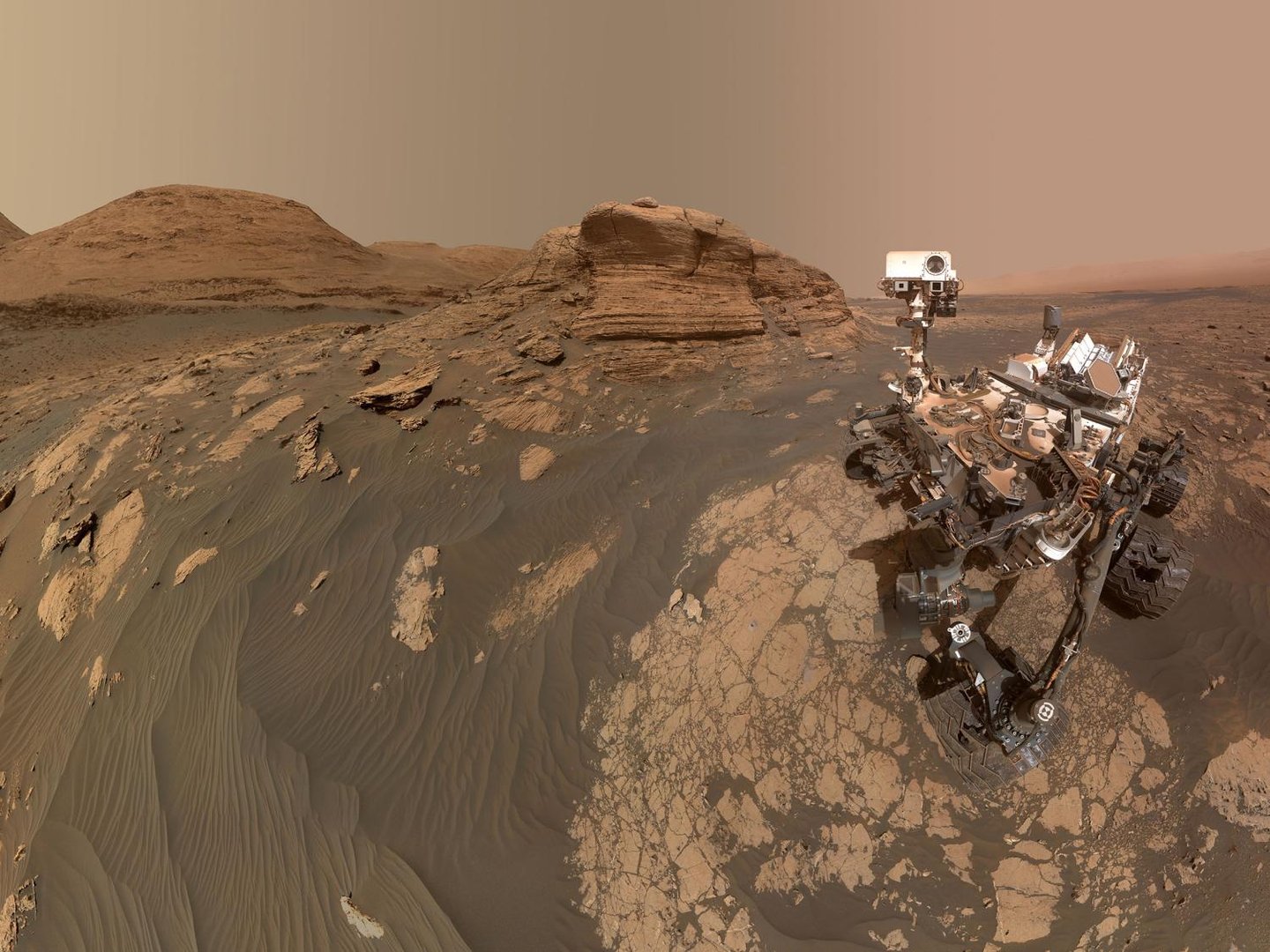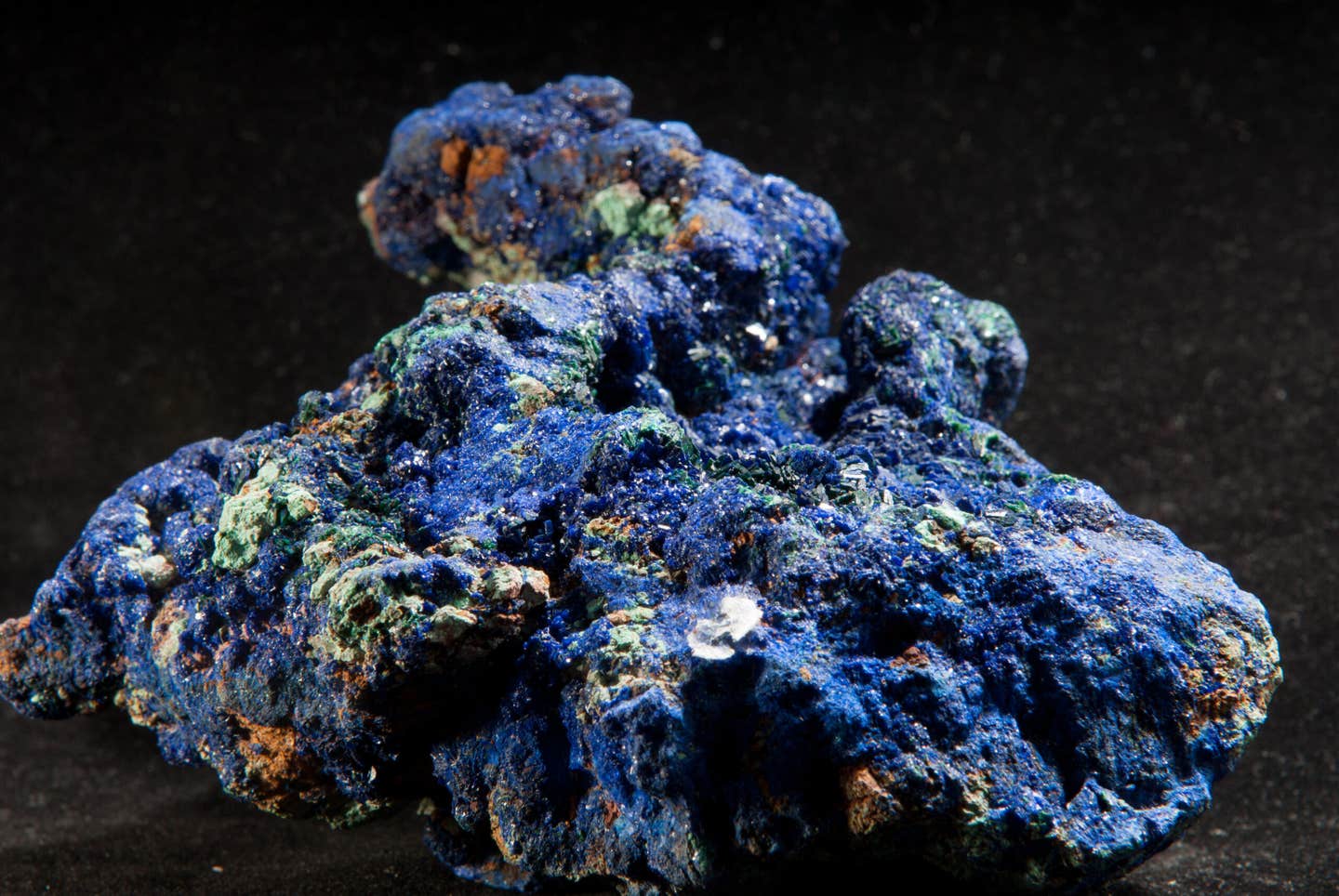Exciting discovery boosts theories of extraterrestrial life on Mars
New analysis of data from the Curiosity rover reveals that much of the craters on Mars today could have once been habitable rivers.

[Oct. 28, 2023: Staff Writer, The Brighter Side of News]
NASA’s Curiosity Mars rover used two different cameras to create this selfie in front of Mont Mercou, a rock outcrop that stands 20 feet tall. (CREDIT: NASA/JPL-Caltech/MSSS)
For decades, the barren red landscapes of Mars have captured the imagination of science fiction writers and scientists alike. Recent findings, however, suggest that this seemingly desolate planet might have once had conditions suitable for life, painting a different picture of its history.
Based on the analysis of data from NASA's Curiosity rover, a team of scientists at Penn State University recently presented intriguing evidence: ancient Mars might have been crisscrossed by rivers.
Their research, published in the Geophysical Research Letters, posits that many of the craters observed on the planet's surface could have been remnants of these riverbeds.
Benjamin Cardenas, the lead author and a geosciences professor at Penn State, shared his optimism: “Mars could have had far more rivers than previously believed, which certainly paints a more optimistic view of ancient life on Mars. It offers a vision of Mars where most of the planet once had the right conditions for life.”
Related Stories
This discovery dovetails with the burgeoning interest in Mars, fueled by mounting evidence that hints at the possibility of past life. Only a few months ago, another study revealed that organic molecules - potential indicators of life - were detected in Mars rocks, suggesting that a lake might have existed there eons ago.
Andrew Steele, a scientist from the Carnegie Institution, expressed both excitement and caution: “Mars is exciting, and still may have signs of life. But it is also teaching us about how the building blocks of life can form.”
In its quest to uncover the secrets of the red planet, NASA has been dispatching landers, rovers, and orbiters, gathering crucial data. While human footsteps haven't yet marked the Martian soil, that might soon change. NASA, reigniting lunar explorations with the Artemis program, plans to return astronauts to the Moon by 2025. This is seen as a precursor, establishing a lunar base to aid in future Mars missions.
NASA Administrator Bill Nelson stands next to a full scale model of the Perseverance rover in April during a tour with members of Congress highlighting current and future missions, including one to bring samples of Martian terrain back to Earth. (CREDIT: Mario Tama, Getty Images)
Another leap for Mars exploration occurred in September when NASA tested MOXIE, a device designed to produce oxygen for astronauts during Martian expeditions.
It's interesting to note that the presence of rivers on Mars isn't an entirely new revelation. The Mariner 9 mission in 1971 first hinted at it. However, what makes the Penn State study groundbreaking is the sheer extent of these rivers. Using a novel approach that combined satellite data, Curiosity images, and decades-old Earth rock scans, the team built a computer model. Their objective? To map how ancient Martian soil eroded over time.
Bench-and-slope morphology pictured on Mars and nose morphology from the ground at Mar's Mont Mercou outcrop. (CREDIT: NASA/Caltech-JPL/MSSS)
Remarkably, they used 3D scans from beneath the Gulf of Mexico as a benchmark, simulating Mars-like conditions. Their conclusion was that many craters on Mars might actually be remnants of ancient riverbeds, shifting the understanding of its geologic history.
Considering the pivotal role rivers play in supporting life on Earth, these findings hold significant implications. If accurate, they could suggest the presence of ancient extraterrestrial organisms. The study also opens up possibilities of uncovering more river deposits elsewhere on Mars, indicating a time when a large part of the planet might have been crafted by these flowing waters.
The latest discovery of organic compounds within Martian rock samples has stirred excitement among astrobiologists. (CREDIT: NASA/JPL-Caltech/MSSS)
Cardenas emphasized the dynamic history of Mars, stating, “What we see on Mars today is the remnants of an active geologic history, not some landscape frozen in time.” As Curiosity continues to unveil more about Mars' watery past, NASA has highlighted other potential locations - like subsurface lakes - as areas to probe for signs of ancient life.
With every new discovery, the distant, enigmatic landscapes of Mars come a little closer, revealing a past that might have been teeming with life and challenging our understanding of our place in the cosmos.
For more science stories check out our New Discoveries section at The Brighter Side of News.
Note: Materials provided above by the The Brighter Side of News. Content may be edited for style and length.
Like these kind of feel good stories? Get the Brighter Side of News' newsletter.



